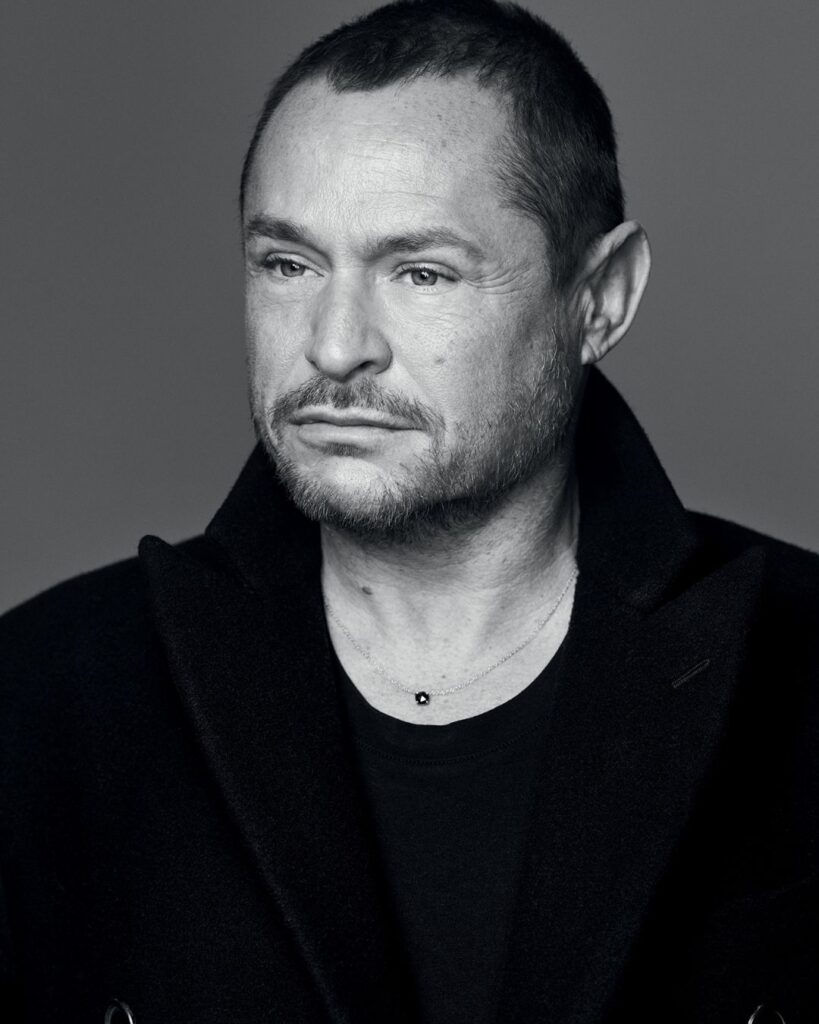- Culture & Travel
10 Famous Paintings With Cats (*meow*)
- ByRadhika Bhalla

Sure, you’ve scrolled through a gazillion videos of cats and kittens up to the darnest things. Yes, we get it. Because centuries earlier, the Egyptians were just as obsessed with these furry, feline creatures. And ever since, artists have taken to oils and paint and ink to pay ode to every little adorable, curious moment of theirs.
And so, it’s only fair to also pay homage both to cats (did someone say supreme leaders?), and the artworks that celebrate both their being and the exquisite beauty of craftsmanship.
Cat Catching A Bird by Pablo Picasso, 1939
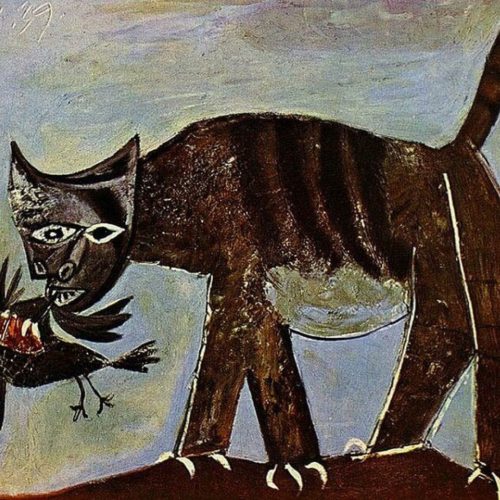
Picasso drew this masterpiece as the Spanish Civil War was coming to an end, and World War II was escalating. And this painting was an allegory to the war, where the hunting cat represented the ravages of war. It has been painted in sharp angles to heighten the extremes of it, and even has a grainy and gritty texture, to convey the pain and danger of destruction. Later, in 1944, Picasso went on to state, “I did not paint the war because I am not the kind of painter who sets out looking for subjects, like a photographer. But there is no doubt that the war is present in the paintings that I did at the time. Later, perhaps, a historian will demonstrate that my work changed under the influence of the war.”
Self-Portrait With Thorn Necklace And Hummingbird by Frida Kahlo, 1940
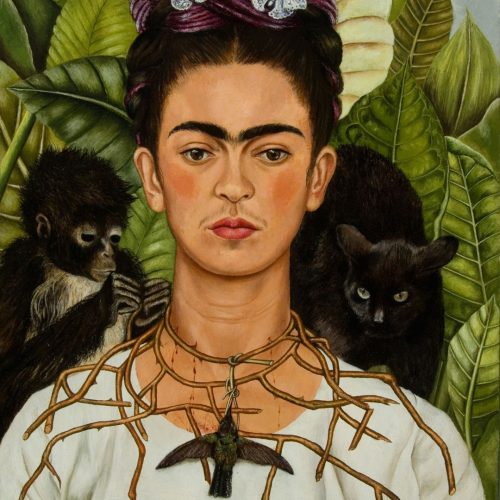
Frida Kahlo identified heavily with indigenous Mexican culture, which is evident in this self-portrait. Painted after her divorce from artist Diego Rivera and also the end of her relationship with photographer Nickolas Muray, Frida showcased the pain in her heart through symbolism, and not the expression on her face. The dead hummingbird hanging from the thorns around her neck, for instance, represent the death of good luck in love [hummingbirds stand for love in Mexican folklore]. This is juxtaposed with the black cat representing bad luck and the monkey, that’s tightening the thorn necklace around her neck, representing evil. In an alternative interpretation, the hummingbird has also been associated with Huitzilopochtli, the Aztec God of War.
The Bachelor Party by Louis Wain, 1939
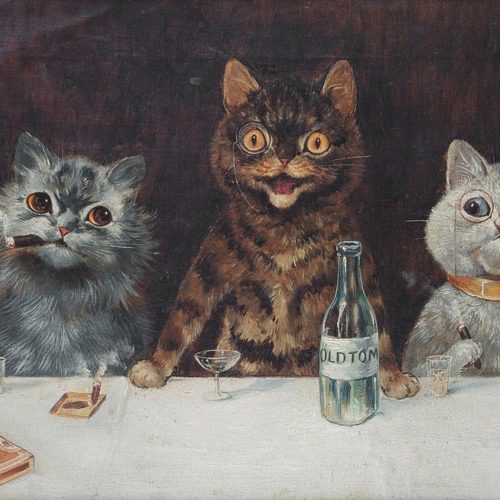
A party of five cats has got to be raucous, and English artist Louis Wain captures it in this delightful work featuring five cats sitting at a table, drinking, smoking, and playing cards. The artist’s works particularly centered on anthropomorphised cats, and he even published the Louis Wain’s Annual dedicated to cats, from 1901 to 1921. His affinity for cats was apparent through his work, and he was also president of the National Cat Club as well as judged several cat shows. Louis spent the last 15 years of his life in mental hospitals, and it is presumed that he had Schizophrenia, which is often attributed to his paintings becoming more extreme with time.
Raminou Sitting On A Cloth by Suzanne Valadon, 1920
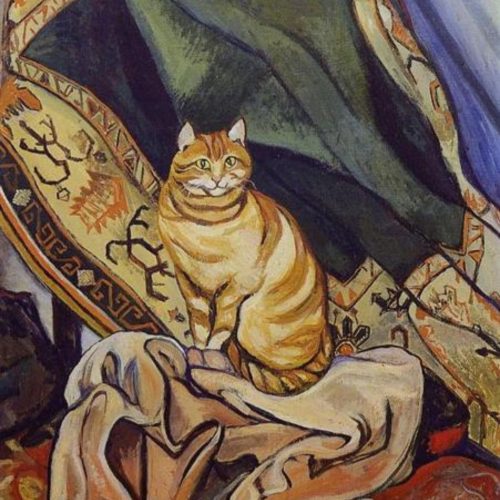
Created in 1920, this dedicated portrait of the artists cat, Raminou, is bright and beautiful, and you can almost sense the tabby ccat’s mischievous spirit through it. French artist Suzanne Valadon featured Raminou in at least three of her paintings, and this one has been made in the Post Impressionist style. Some suggest that Suzanne’s love for the cat was after her own independent spirit. In fact, she became the first female painter to be admitted into the Société Nationale des Beaux-Arts in 1894.
Cat Holding a Prawn in its Mouth, Kalighat Painting, Bengal
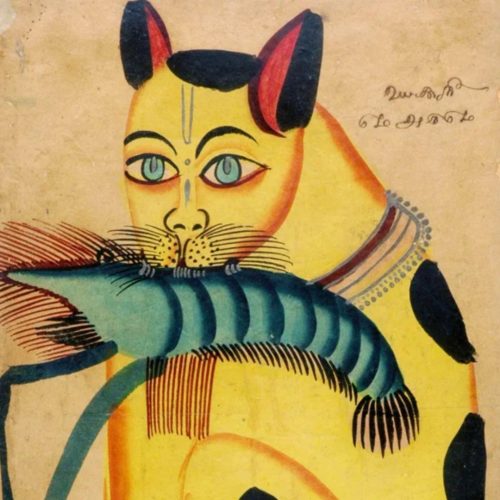
In Kalighat paintings, the image of the cat with a prawn in its mouth is a familiar motif that stands for the hypocritical monk or ascetic. Despite preaching that everyone should renounce worldly pleasures, this analogy of the priest shows him enjoying good food. And that is how art, my dears, becomes satire.
The White Cat by Pierre Bonnard, 1894
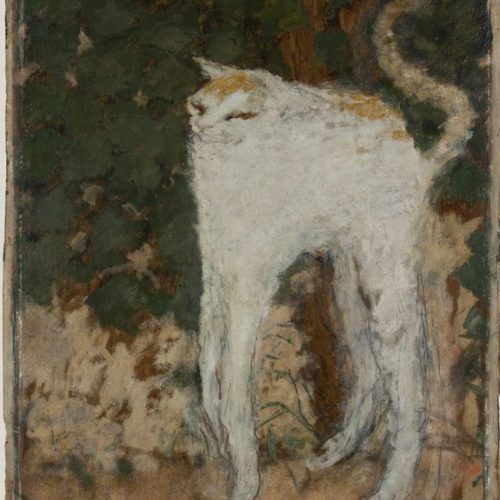
Pierre Bonnard’s cat certainly looks up to no good. Exaggerated in its proportions, with slits for eyes and an arched back, there is something humorous about this cat. The artist, meanwhile, was deeply influenced by Japanese artists, and was even instrumental in the transition of art from Impressionism to Modernism.
In this painting, Pierre has paid extra attention to the cat’s paws, making changes until he decided to go with this shape.
The Cat by Bart van der Leck, 1914
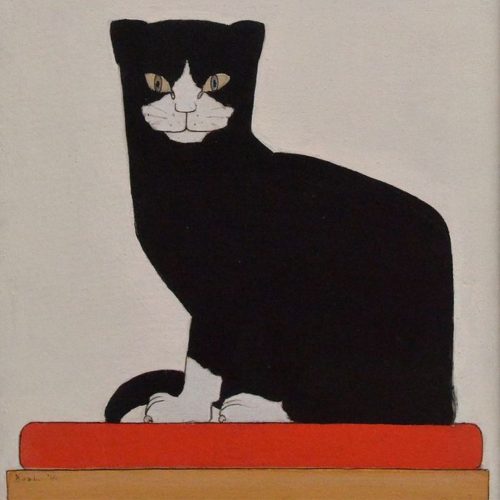
Dutch artist Bart van der Leck created this painting in a new, radical form of abstraction that focused on using the primary colours of red, yellow, and blue. In this painting, which looks like it could belong to the present time, we can see the cat in both its front and side angle, inspired by classical Egyptian art that Bart witnessed in the Louvre, Paris. This black cat boasts piercing eyes, and highlights Bart’s movement called De Stijl that celebrated a strict geometry of horizontals and verticals.
Barber Shop With Monkeys And Cats by Abraham Teniers, 1633-1637
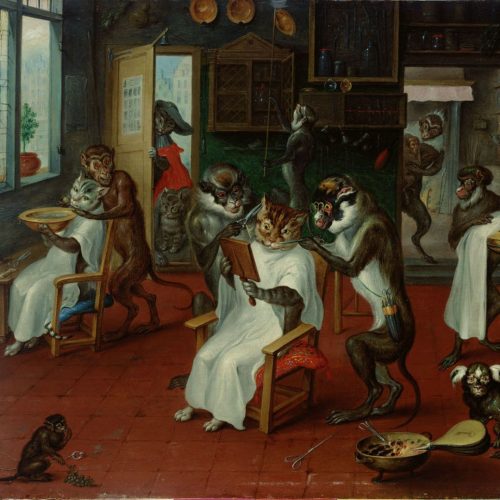
Flemish artist Abraham Teniers belong to a family of artists who made village scenes, and Abraham became known for his inn scenes and money depictions. This is a fascinating work he created, with anthropomorphised cats and monkeys performing grooming acts. With a retinue of staff looking after these vain cats, it’s safe to say they have always had staff to look after them.
Julie Manet With Cat by Pierre Auguste Renoir, 1887
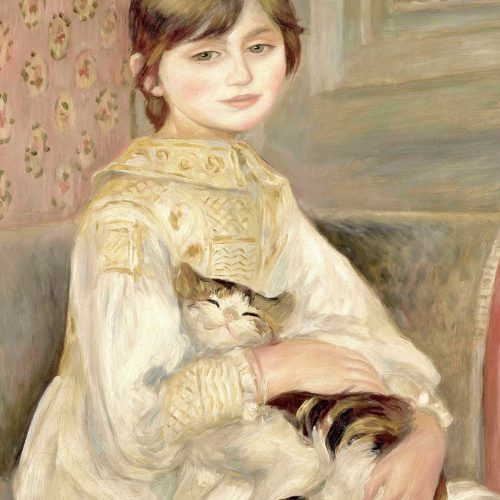
Julie Manet was the niece of the famous artist, Édouard Manet, and the daughter of the great impressionist, Berthe Morisot. Renoir was commissioned to make this portrait, which he made in a refined finish. The pressure must have been high for the artist, for he created at least four preparatory sketches for this work, which was not his usual style. Renoir also worked on small sections to get in the details, from Julie’s expression to the content little kitten’s.
By Day She Made Herself Into A Cat by Arthur Rackham, 1920
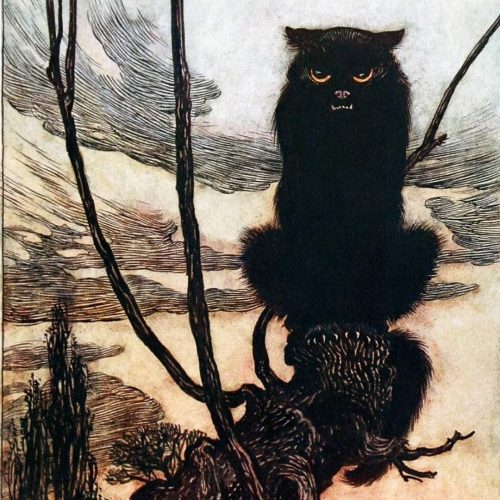
English book illustrator Arthur Rackham was famous for this sketches for Peter Pan in Kensington Gardens and the Fairy Tales of the Brothers Grimm. This illustration of a cat perched on a tree, with a menacing look on her face, was for the story ‘Jorinda and Joringel’ where a shape-shifting witch would turn innocent (rather, virgin) girls into birds and caged them and any man who would come near her to stone.
The artist’s works delighted many a reader in its time, which is quite rightfully known as the ‘Golden Age of British book illustration’
With inputs from Nandini Upadhyay

